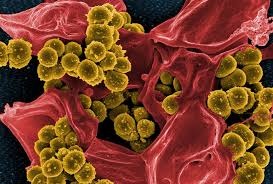Current Assessment of the Antimicrobial Activities of Carica Papaya extracts on selected Bacterial Pathogens isolated from Urogenital Specimens in Calabar, Nigeria
Main Article Content
Abstract
Urinary tract infections (UTIs) have posed numerous challenges to human health and account for a significant part of the workload in clinical microbiology laboratories. One global challenge with UTIs is the increasing resistance rate to available antimicrobials. This study assessed the antimicrobial activity of Carica papaya stem, root, and leaf on Escherichia coli and Staphylococcus aureus isolates from genitourinary tract specimens. Clinical isolates of S. aureus and E. coli were obtained and confirmed microbiologically. Plant extracts were prepared and diluted into 500mg/ml,250mg/ml,125mg/ml, and 62.5mg/ml concentrations, respectively. The agar well diffusion method was used to determine the antimicrobial activity. This study observed promising activities with papaya roots and stems. The ethanol extract of the stem showed maximum zone of inhibition against Staphylococcus aureus and Escherichia coli at 500mg/ml with mean diameter of 17.6±1.0mm and 14.1±1.4mm, while the lowest activity was reported with the 62.5mg/ml concentration. The aqueous extract also showed the highest activity with increasing concentration. Both ethanol and aqueous root extracts showed the highest activity at 500mg/ml concentration against S aureus and E coli isolates, with 30.5±0.6mm and 21.5±1.4mm mean diameters for ethanol and 23.2±1.6mm and 8.40±1.58mm for aqueous extracts, respectively. However, the activity of both ethanol and aqueous extract of papaya leaf were lower than the activities of papaya root and stem, respectively. The findings in this study show that extracts of pawpaw stem, root, and leaf have different levels of antibacterial activity against the urinary tract pathogens tested with increasing concentrations.
Metrics
Article Details

This work is licensed under a Creative Commons Attribution-NonCommercial 4.0 International License.
References
Smith JP. Bacterial pathogens and global public health threats. Infect Dis Rev. 2018; 5(2), 97-110.
Johnson LM. Challenges in managing bacterial infections in developing regions. Glob Health J. 2020; 8(1), 45-58.
Adams JK, Smith RM, Johnson LP. Exploring alternative antimicrobial agents from natural sources. Med Plants Res. 2019; 14(3): 120-135.
Brown AB, White CD. Medicinal properties of Carica papaya. J. Ethnopharm. 2017; 25(2): 78-92.
Garcia MP, Johnson SE, Adams EF. Bioactive compounds in Carica papaya and their antimicrobial activities. Intern J. Nat Prod Res. 2021; 32(4): 210-225.
Smith JP, Johnson LP, Brown EF. Physiological characteristics of the urogenital tract. J. Anat. 2017; 5(2): 97-110.
Johnson, LM, White CD. Bacterial pathogens in urogenital infections. J. Med Microbiol. 2019; 45(2), 97-110.
Adams EF. Impact of urogenital infections on public health. Glob J. Infect Dis. 2020; 14(3): 120-135.
Brown AB, Garcia MP. Urogenital infections in Calabar, Nigeria: A retrospective study. Nig J. Med.
; 25(2): 78-92.
Johnson SE, Smith RM, Adams JK. Innovative approaches to tackle urogenital infections. Pub Health Rev. 2022; 8(1): 45-58.
Alabi OA, Haruna MT, Anokwuru CP, Jegede T, Abia H, Okegbe VU, Esan BE. Comparative studies on antimicrobial properties of extracts of fresh and dried leaves of Carica papaya (L) on clinical bacterial
and fungal isolates. J. Advance Appl Sci Res. 2012; 3(5): 3107-3114.
Ajiboye AE, Olawoyin RA. Antibacterial activities and phytochemical screening of Crude Extract of Carica Papaya leaf against selected pathogens. Glob J. pure appl sci. 2020; 26: 165-170
Akujobi CN, Ofodeme CN, Enweani CA. Determination of the antibacterial activity of (Pawpaw) Extracts Carica papaya. Nig J. Clin Prac. 2010; 13(1): 55-57.
Jigna P, Nehal K, Sumitra C. Evaluation of antibacterial and phytochemical analysis of L. bark. Afr J. Biomed Res. 2006; 9(1): 53-56.
Dubale S, Kebebe D, Zeynudin A, Abdissa N, Suleman S. Phytochemical Screening and Antimicrobial Activity 15.Evaluation of Selected Medicinal Plants in Ethiop. J. Exp Pharm. 2023;15:51-62. doi: 10.2147/JEP.S379805.
Srinivasan R, Karthi J, Swarnalatha S, Samkamaliyal C, Bharathi S, Karthickraja G, Manivannan D, Rohith H. Extraction and standardization of Caricapapaya leaf and evaluation of antibacterial activity. Int J. phytothera. 2019; 9 (2): 14-19.
Kowalska-Krochmal B, Dudek-Wicher R. The Minimum Inhibitory Concentration of Antibiotics: Methods, Interpretation, Clinical Relevance. Patho. 2021; 10(2):165.
Rodríguez-Melcón C, Alonso-Calleja C, García-Fernández C, Carballo J, Capita R. Minimum Inhibitory Concentration (MIC) and Minimum Bactericidal Concentration (MBC) for Twelve Antimicrobials (Biocides and Antibiotics) in Eight Strains of Listeria monocytogenes. Biol. 2021; 29;11(1):46. doi: 10.3390/biology11010046.
Latha SP, Kannabiran K. Antimicrobial activity and phytochemicals of Solanum trilobatum Linn. Afr J. Biotech. 2006; 5(23): 2402–2404.
Chandra G, Ghosh A, Chatterjee SK, Bhattacharjee I. Antibacterial activities of some plant extracts used in Indian traditional folk medicine. Asia Pac J. Trop Biomed. 2011; 165-169.
Hema TA, Arya AS, Subha S, John CRK, Divya PV. Antimicrobial activity of five south Indian medicinal plants against clinical pathogens. Int J. Pharm and Bio Sci. 2013; 4(1): 70 – 80.
Popoola TOS, Yangomodu OD, Akintokun AK. Antimicrobial activity of cassava seed oil on skin pathogenic microorganisms. Res J. Medic Plants. 2007; 1(2): 60-64.
Shimada T. Salivary proteins as a defense against dietary tannins. J Chem Ecol. 2006; 32(6): 1149-1163.
Parekh J, Chanda S. In vitro antibacterial activity of crude methanol extract of Woodfordia fruticosa Kurz flower (Lythacease). Bra J. Microbiol. 2007; 38(3): 2.
Omidiwura BRO. Qualitative and quantitative analysis of pawpaw (Carica papaya) leaf extract and its antimicrobial effect in animal production. Nig J. ani Prod. 2017; 44(3): 78 – 83.


